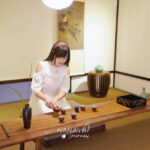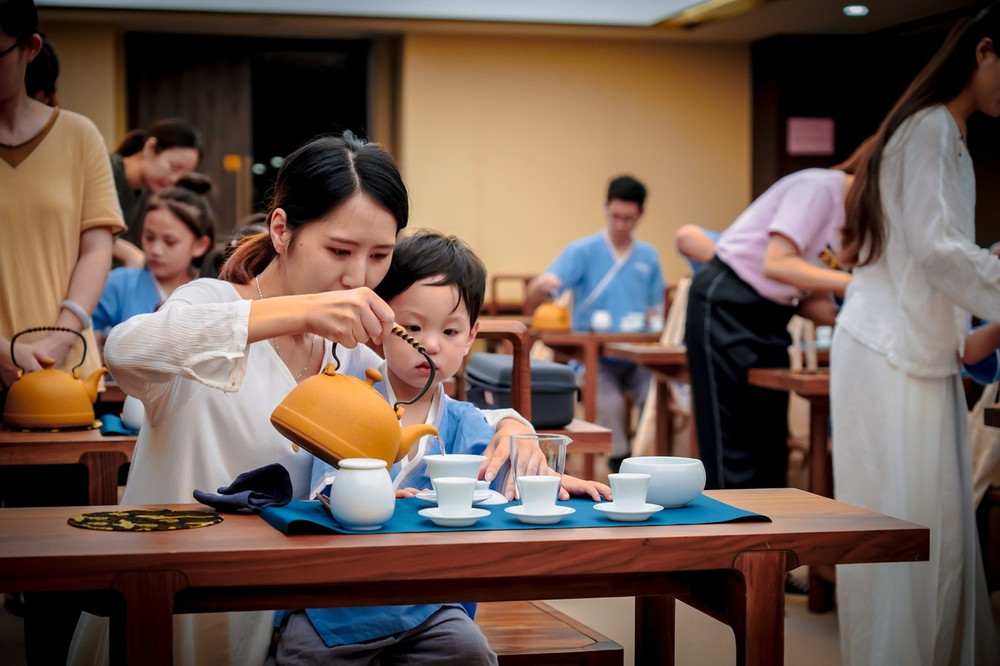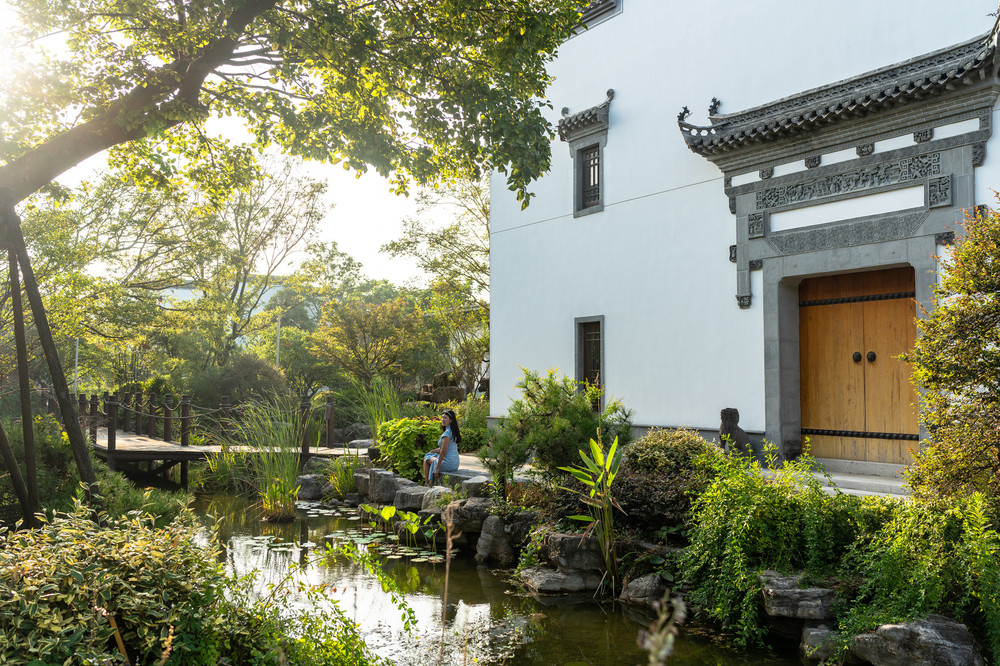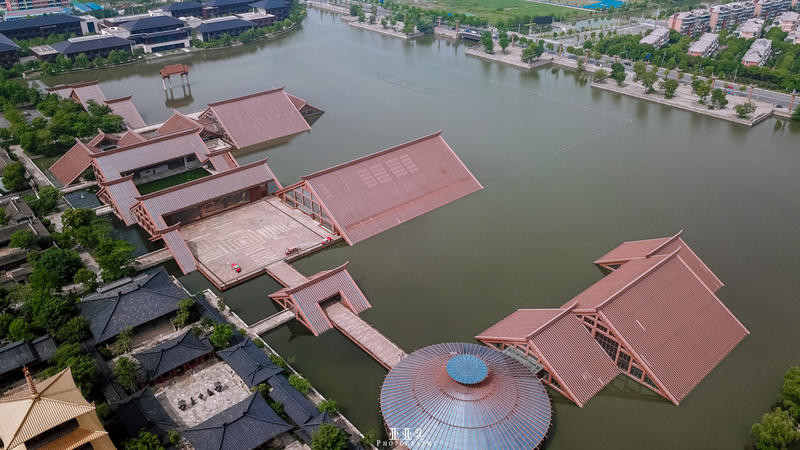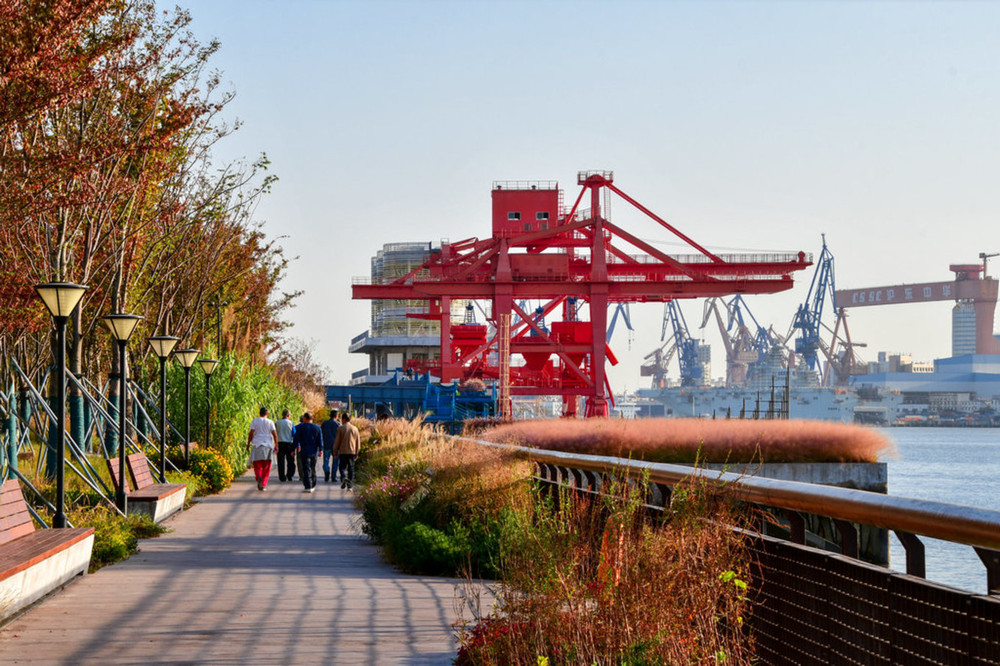On February 15, 2021, the fourth day of the lunar year, I embarked on a special long journey to Jinze, Shanghai, with the intention of revisiting and exploring the ancient bridges I had seen over eight years prior. My one-day free travel took me to several remarkable places, including the Shanghai Fangsheng Bridge, Puji Bridge, and more, as documented in my游记 published on 2021-02-25 at 19:58.

Arriving at Xiatang Street via the Shangshang Express from Danshui Road to Jinze Bus Station, I was immediately struck by the Tianhuang Pavilion Bridge, the only three-arch stone arch bridge in Jinze. Originally constructed in the Ming Dynasty and rebuilt in 1698 during the Kangxi Emperor’s reign, the bridge draws its name from the now non-existent Tianhuang Temple to its north. The bridge’s center features a stone carving of a Ruyi pattern, alongside reliefs depicting Buddhist motifs such as ‘Samsara’, ‘Treasure Banner’, and ‘Lotus Seat’. Inscriptions like ‘Namo Amitabha Buddha’ grace the bridge’s pillars, while its parapet is adorned with exquisitely carved stone lions that seem to come to life.
Continuing north along Xiatang Street, I couldn’t help but notice Xujia Hall, an old house that was once a grand residential compound with six sections. Now, only three sections remain, with an elderly woman silently sitting in what has become a desolate courtyard.
Further along, at the northern end of Jinze Town, stands the Wan’an Bridge, a single-arch stone arch bridge built in 1260 during the Southern Song Dynasty. Spanning the Jinze City River and Jinxi River, it measures 29 meters in length, 2.6 meters in width, and 5.5 meters in height. The Wan’an Bridge, often referred to as a sister bridge to the Puji Bridge built a few years later, is structurally and materially similar. Known as ‘Jinze’s first rainbow’, it is a testament to the town’s rich history, despite some sources incorrectly citing the Puji Bridge as the oldest and best-preserved in the Shanghai area.
Once, a pavilion made of nanmu wood allowed travelers to rest and enjoy the view from the surface of Wan’an Bridge, earning it the nickname Ting Bridge. East of the bridge stood the Fuguo Pavilion, and to the west, the God of Wealth Pavilion, making it a rare example of the ancient practice of ‘bridge carrying temple’ in Jiangnan. Today, these structures are no more, and the historic landscape they created has become a memory.
Crossing Wan’an Bridge and heading south along Shangtang Street, I encountered the Tahui Bridge, spanning Beisheng Port. With a history dating back to the Ming Dynasty, Tahui Bridge was once a single-arch stone beam bridge but has since been converted into a concrete slab bridge. Although it may sit on ancient foundations, the bridge surface has been altered from concrete to stone, and thus, it can no longer be considered an ancient bridge.
The Ta Hui Bridge, located at the intersection of Jinxi River and Bei Sheng Bang, is arguably the heart of Jinze’s ancient town. To the west, one can still see the Tian Huang Ge Bridge on Xia Tang Street, with historical accounts suggesting the presence of a Yuan Tong Temple and an ancient pagoda by the side of Ta Hui Bridge.In the past, Jinze was renowned as the ‘land of fish and rice’ in the Jiangnan region, with Bei Sheng Bang as the hub for the distribution of these goods. Several major commercial firms were located near the Ta Hui Bridge. Today, the temple and pagoda are no longer there, and the commercial streets have vanished, leaving only the tea house to the northwest of the bridge to add a touch of antiquity and vicissitude to Ta Hui Bridge.
Moving south along Shang Tang Street, crossing Jinxi Road, and continuing not far along Shang Tang Street, one encounters the Pu Qing Bridge, built in 1999 in the style of the Bian Water Rainbow Bridge from Zhang Zeduan’s ‘Along the River During the Qingming Festival’ of the Song Dynasty. This single-hole wooden arch bridge, spanning the Jinxi River from east to west, was constructed by the American WBGH publishing company for the production of the ‘Chinese Rainbow Bridge’ program, entirely following ancient bridge-building techniques without the use of scaffolding. Sixty-four arch circle woods and five horizontal beam woods form the arch circle, all tied together in a bundle, without a single nail, recreating the exquisite ancient Chinese bridge-building craftsmanship, embodying both splendor and magnificence.
Although Pu Qing Bridge is not an ancient bridge, its construction according to ancient methods does not feel out of place in the ancient town of Jinze. From a distance, the vermilion bridge body adds a festive and bright color to the water town. A water town is always accompanied by river docks and bridges, and river docks and bridges can be seen on both sides of the Jinxi River. Wooden boats carrying tourists for sightseeing on the river occasionally pass by, allowing one to experience the bustling water transport of the past.
Not far south of Pu Qing Bridge is the Pu Ji Bridge, similar in structure to the Wan An Bridge. This sister bridge of Wan An Bridge was built in the third year of the Xian Chun era of the Southern Song Dynasty (1267), and stone railings were added during the early years of the Qing Yongzheng reign. It has been more than seven hundred and fifty years old and is known as ‘the first bridge in Shanghai’ and the best-preserved and oldest stone bridge in the Shanghai area.
Pu Ji Bridge, a single-arch round arc stone arch bridge spanning the Jinxi River from east to west, is 26.7 meters long, 2.75 meters wide, with a span of 10.5 meters. The arch circle masonry is the same as the famous Zhaozhou Bridge in Hebei Province. The bridge has a gentle slope and a narrow bridge surface, with distinct characteristics of a Song Dynasty stone arch bridge. The bridge top circle is engraved with the inscription ‘Xian Chun three years’, the handwriting is blurred, and the inner arch stone is engraved with lotus banners.
The most distinctive feature of Pu Ji Bridge is the stone material of the bridge. Most of the bridge stones are purple stones. Although the bridge stones have been replaced in later repairs and maintenance, and the bridge body is mixed with bluestones and granites, it is still a neat purple stone bridge. It is said that when the rain clears up, the bridge surface is crystal clear and shiny, like a gem bridge inlaid with purple stones, hence Pu Ji Bridge is commonly known as ‘Purple Stone Bridge’.
In the Song Dynasty, there were many purple stone bridges in the Jiangnan region, and Wan An Bridge in Jinze should have been a purple stone bridge, but due to its long history, the non-purple stone bridge stones used in later repairs and maintenance are far more than the original purple stones, and it can no longer be called ‘Purple Stone Bridge’.
Compared with the two sister bridges, the ‘elder sister bridge’ Wan An Bridge, which was built a few years earlier, is much more weathered than the ‘younger sister bridge’ Pu Ji Bridge. Most of the ancient bridges in Jinze have approach bridges at both ends, and Pu Ji Bridge is the most typical.
Leaving Pu Ji Bridge and continuing south along Shang Tang Street, you will arrive at the south end of the ancient town of Jinze, by the Fang Sheng Bridge, which is the most impressive viewing point for me. Standing on the northwest side of the Fang Sheng Bridge and looking north, you can see Pu Ji Bridge, and looking south, you can see the Ru Yi Bridge connected in a straight line with Fang Sheng Bridge.
The Fangsheng Bridge was originally constructed during the Ming Dynasty and was renovated in the first year of the Chongzhen era (AD 1628). It is named ‘Fangsheng Bridge’ because it is located above the Fangsheng River, and is also known as ‘Zongguan Bridge’ due to the presence of the Zongguan Temple on the north side of the bridge. As the name suggests, the Zongguan Temple was presumably a Taoist temple, said to have been built in the Ming Dynasty, and is believed to have enshrined the deified Jin Yuanqi, a native of Kaifeng, who was known for his loyalty and selflessness. After his death, he was posthumously honored by the imperial court and a temple was established for his worship.Today, the Zongguan Temple has transformed into a small Buddhist temple. I speculate that the ‘Fangsheng River’ might not have been its original name, possibly earning this title due to the frequent release of animals by devotees near the temple along the riverbank. It is said that on the 28th day of the third lunar month and the ninth day of the ninth lunar month, many devotees arrive carrying yellow incense bags filled with fish and snails, releasing them under the Fangsheng Bridge as a demonstration of their charitable spirit and devotion to the Bodhisattva.
The Fangsheng Bridge is a single-arch stone bridge, 25.2 meters long and 4 meters high. It has been renovated several times since the Ming and Qing Dynasties. Constructed from granite and bluestone, the bridge’s pillars are engraved with the couplet ‘The bridge connects Ruyi, leading to Kangqu, the water flows from the bay and connects to Xiuqi.’ Walking past the Fangsheng Bridge and heading south along Shangtang Street for less than a hundred meters, one reaches the Ruyi Bridge.
The Ruyi Bridge, located at Dongsheng Port, was built during the Yuan Dynasty’s Zhiyuan period (1279-1294) and renovated in the first year of the Chongzhen era (1768). This stone arch bridge is 20.8 meters long and 3.4 meters wide. It is also known as the Master’s Bridge due to the presence of a master’s temple on the south side. The Ruyi Bridge is the most striking in Jinze, with its high round arch and the reflection in the clear water forming a perfect circle. Made entirely of granite, it features a carved dragon on the bridge surface and a Ruyi pattern on the right end. The bridge pillars on both sides are engraved with bridge couplets; the east side reads ‘The previous fruit and the subsequent cause, the Ruyi Bridge fulfills the intention, as the name suggests, the master’s temple is the master of good deeds.’ The west side couplet, attributed to Liu Bowen of the Ming Dynasty, states ‘Transforming dangerous situations into smooth roads for thousands of years, relying on generous help to ensure safety for all.’
Continuing south along Shangtang Street past the Ruyi Bridge, one arrives at the Yingxiang Bridge at the southern end of Jinze Ancient Town. Built during the Yuan Dynasty’s Zhiyuan period (1335-1340) and renovated twice during the Ming Dynasty’s Tianshun period (1457-1464) and the Qing Dynasty’s Qianlong thirty-third year (1768), the Yingxiang Bridge is a six-column five-hole beam-frame stone bridge, 34.25 meters long and 2.14 meters wide. With five long bluestone columns standing in the water, it forms five bridge holes. Unique among ancient stone bridges, its surface is made of blue bricks laid with lime and glutinous rice paste. The Yingxiang Bridge has a gentle longitudinal slope and is paved with bricks without steps or railings, due to the frequent passage of the Yuan Dynasty’s Mongolian cavalry. Slightly arc-shaped, it spans the water like a rainbow, earning the reputation of ‘Yingxiang Night Moon,’ one of the eight scenic spots of Jinze, with the saying ‘the moon is printed on the river, the water and sky are the same color.’
After passing the Yingxiang Bridge, one returns to Xiatang Street, where old houses worth visiting line the street, some of which have served as granaries and factories. A display room in a courtyard that once housed a sewing machine factory showcases local Shanghai-made sewing machines, including the familiar Butterfly and Flying Man sewing machines from my childhood, as well as sewing machine purchase coupons from the era of material scarcity.
Continuing past the Puqing Bridge, a woman selling local pastries informed me of several ancient bridges in the northern market of Jinze Ancient Town, all the way to the waterway of Zhujiajiao, where there used to be many ancient bridges. Heading north along Shangtang Street, past the Wan’an Bridge, I unexpectedly discovered the Linlao Bridge at the northern end of Jinze Town, which I had not seen on my last visit.
The Lin Lao Bridge is a single-arched bluestone bridge, originally constructed during the Yuan Dynasty (1264-1294) and renovated in the Ming and Qing Dynasties. Measuring 24 meters in length, standing 4.5 meters high, and 2.7 meters wide, it has an arch span of 8.4 meters and an arch height of 3.35 meters. Constructed with a mix of bluestone and granite, it features stone railings, balusters, and drum-shaped stones on both sides. The bridge’s surface, smooth from age, exudes an air of simplicity and elegance. FacingAccording to the ‘Kanazawa Chronicles’, Lin Qing, a native of Kanazawa during the Yuan Dynasty, funded the construction of a bridge which was named after him as ‘Lin Lao Bridge’. Lin Qing, who rose to the rank of Imperial Emissary, was a man of extensive knowledge and wisdom. He was known for his humility and had a vast collection of books at home. He contributed generously to the construction of bridges and temples in Kanazawa. This included not only the construction of Lin Lao Bridge but also the reconstruction of Yang Ye Temple and the renovation of Wan An Bridge. Strolling through the ancient town of Kanazawa, one encounters seven ancient stone bridges from the Song, Yuan, Ming, and Qing Dynasties: Lin Lao, Wan An, Tian Huang Pavilion, Pu Ji, Fang Sheng, Ru Yi, and Ying Xiang. These bridges evoke a sense of tranquility and depth, as well as the melancholy of history. The charm of historical and cultural relics is akin to aged wine or fine tea, with a subtle fragrance that lingers. Unconsciously, several hours pass, and it is time to say goodbye. Even after many years, I will remember the ancient bridges I have walked across in Kanazawa.

